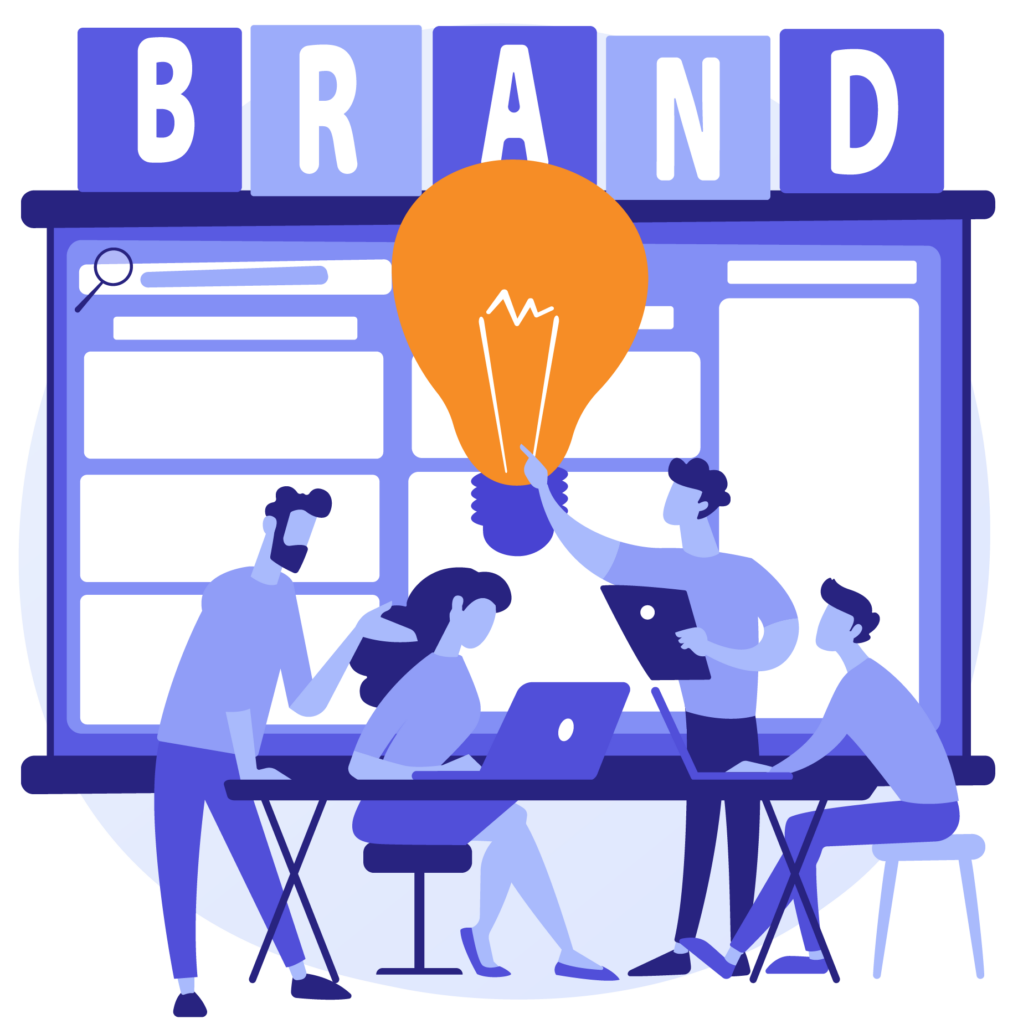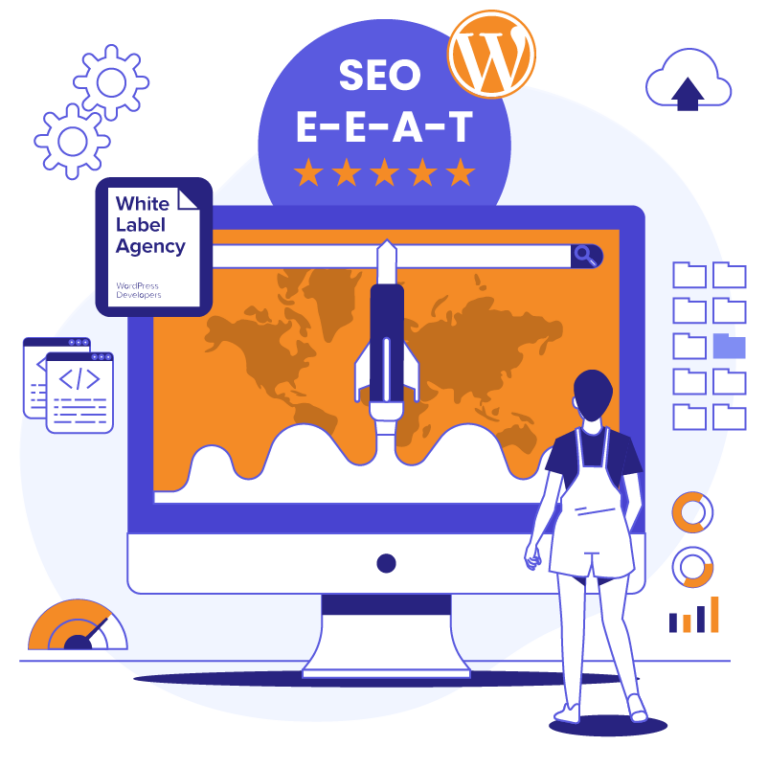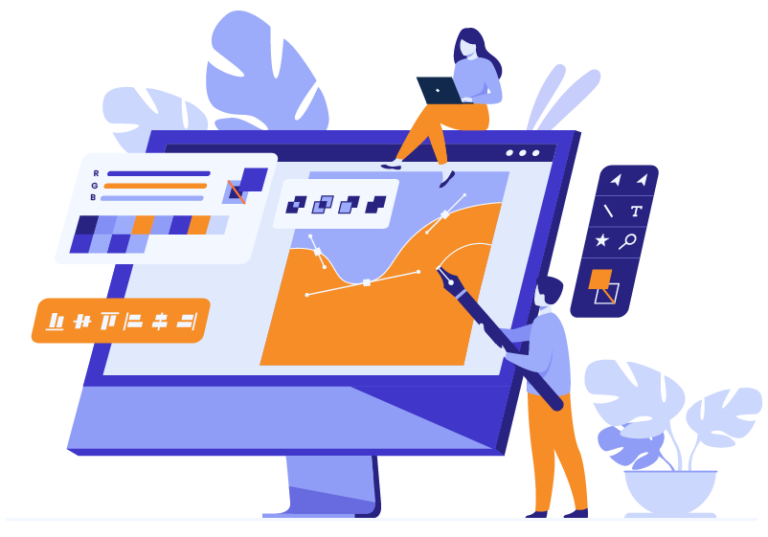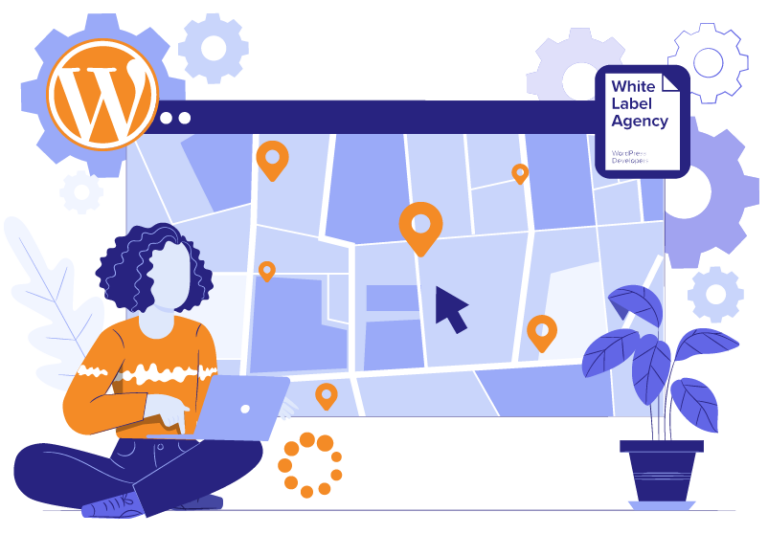I recently sat down with Brand Strategy Consultant Michelle Roberts to talk about her work, and how she has reinvented the way companies should think about their mission, vision and value statements.
You can listen to the interview here below, or read the shortened version as an article below. Having recently gone through the process of rebranding ourselves, I was very excited to have the opportunity to get face-to-face with an expert on the matter.
Daniel (1:00): Michelle, I’ve heard you built brands for 67 companies, you do speaking engagements, you advocate for women and business. You also very passionate about helping organizations in general. Tell me, how come you decided to be a branding designer?
Michelle (1:38): It started when I was young and had a fascination with people, and had a passion for understanding why people do what they do. This fascination inspired me to go deeper and help others understand themselves and their businesses on a deeper layer so that they can communicate themselves correctly in a busy world.
My background is also in design – I am an award-winning, internationally published graphic designer. Soon after working the in the world of design, I felt that there was much more that I could do and ways that I can help people and organizations.
It’s about uncovering their purpose and mission behind the business and positioning that in the foreground to build deep emotional connection with their audiences. That’s the short story of how I become a brand consultant
D. (2:40) Could you describe what is a typical client for you, and what they are looking for?
M. (3:15) Typically they are progressive, forward-thinking – they want to push the boundaries and aren’t afraid of doing something different to get people’s attention. They care about their people and the future of the world, and the community they reside in. It’s about conscious companies, conscious leadership.
Companies like Patagonia are a great example. They want to do good in the world and get a message out there. My clients range from small to medium-size companies, and they have a successful business already flourishing and just want to get it to the next level.
There are many benefits to gain from a brand, but there are 3-4 main things they are looking for when they decide to hire me:
- They are looking for someone to help them get clear, and confident around who they are and where they fit in the world.
- They might be experiencing a new competitor and need to quickly stand out. I help to differentiate them in a crowded marketspace
- They might be having high employee or customer turnover rate or low customer retention.
“Brand is the sum total of experiences you create for your customer, it’s reputation, it’s the experience.”
D. (5:30) Branding is a science in itself, and I suspect that most clients don’t know half of it. Are there some common misconceptions about branding that you feel is useful to educate your clients about as you get started on a project together?
M. (6:03) Brand is the sum total of experiences you create for your customer, it’s reputation, it’s the experience. I always educate first. There are a lot of misconceptions around branding.
One is that people think that logo is the brand or they need just a fancy website. Those are not going to cure your root problem. A website cannot really solve the problem, and people might think “After I have my logo created I have a great brand and brand strategy”.
The other misconception is that people think that branding and marketing are the same. A great marketing campaign may help you on the first steps and get people to purchase the product or service right away, but the brand defines whether you’ll be buying the product for the rest of your life.
D. (9:10) Could you tell us more the method that you use to get started on finding that core and building towards getting a brand.
M. (9:54) My philosophy is that we help our customers brand themselves properly so they can emotionally connect and build a relationship with the organization.
Some companies still have the mentality to push marketing of a product or service, and don’t really take a look at the beliefs behind what the organization is about, and its social impact.
I have a process called the Novus Brand Pyramid. It breaks down three stages of building your brand in a very easy and recognizable way. To visualise it I created a pyramid model that clearly explains stage 1, 2 and 3. I’ll go through it briefly.
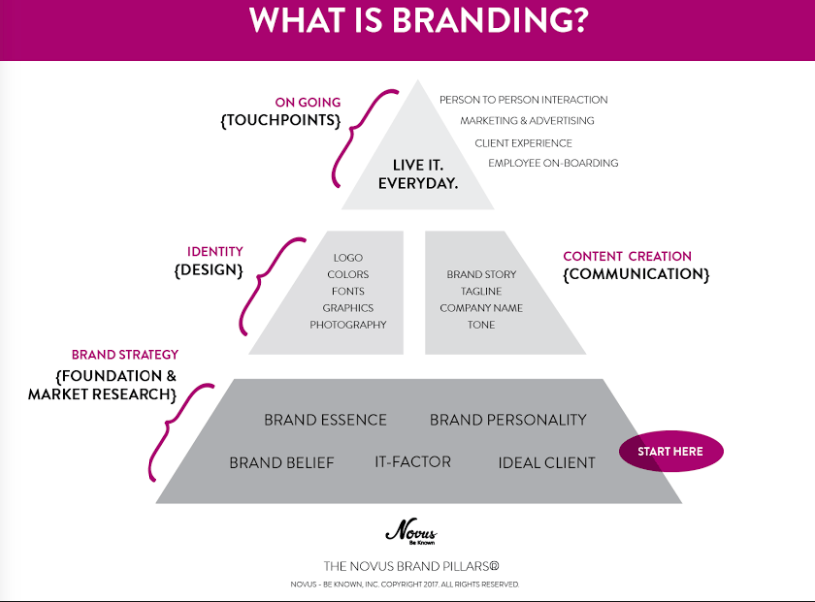
The first stage is really about understanding who you are in the market and how you communicating your values. What is your personality like? Not on a surface level, but diving really deep into that. There’s a lot of reflection and research that goes into it.
So once the brand strategy stage one is built, the next step is how your organization is packaged using the strategy. So, the visuals, your content creation, your company name, the tagline: how you are communicating and advertising in the market. That’s stage two.
Stage three is where we’re able to take stage one and two and start to create effective marketing campaigns. These are your touchpoints and how you interact with your clients, the fully branded experience. Here is where I typically work with my clients as a consultant or in a train the trainer program which I’ve recently developed.
“Most people think that they just need a great website and it’s not really solving the root problem.”
Again, most people think that they just need a great website and it’s not really solving the root problem. We’re going to have to position them correctly first, so I find that this pyramid model helps people with what goes into building a brand and how much effort and time it takes to do it the right way. It can save you hundreds of hours and tons of money in the long run if you do it properly, rather than trying to come up with a new logo every couple of months because it’s just not feeling right anymore.
D. (14:08) I can relate to this process as well, because we recently rebranded too. We launched our new website recently, and we started the work I think a year ago. It took me a lot cups of coffee to think about that and talk to my team, the soul-searching on who we are as an organization, who are we for, and how can we differentiate ourselves.
M. (15:25) Right, exactly. There are other core questions that we are asking. Something like, if your organization was a car brand what would it be and why? It just give us insight into how better communicate your unique value. I hear all the time organizations say “Hey, come up with something catchy for me! Something that’s cool!” And so what I say to them is that it’s not about looking outside of your organisation for something cool, it’s about uncovering what’s already there. There are so many missed opportunities if you are not expressing your brand correctly. You have to be authentic with your brand.
“I believe within every organization there is unrealized potential. And it’s just waiting to be revealed.”
D. (16:45) As a brand designer and a brand strategy consultant, what are the most enjoyable parts of your work?
M. (17:28) Great questions. I think what I enjoy most is helping organizations realize their potential. I believe within every organization there is unrealized potential. And it’s just waiting to be revealed. And I’m acting as a catalyst, if I can transform any organization, then I can transform people’s lives. And make the world better. I absolutely love to be a part of that.
Within the process, the thing I love most is helping someone see and realize that there’s potential in their organization. Branding is emotional and ties to great results. Also boosting a company’s moral, just working together and working faster, or increasing a client’s leads by over 30%. In essence, to be able to know that I’m directly affecting their business results.
D. (20:30) What are the main frustrations or challenges that you have?
M. (21:03) I would say helping people understand first what branding is. I host workshops on branding because I want to change the misconceptions around it and that takes a lot of education. So I would say one of the biggest frustration is helping people to think differently about how to talk about their businesses, to think about their cause, beliefs and their why. Instead of just pushing products and services to people but really standing for something much greater than that.
A second frustration is managing the brand after it’s created. I help clients create a plan and implement the brand plan, but they need to reinforce what we built. A great brand is great to have, but it’s frustrating when it’s put on the backburner or viewed as not as important as marketing or other pieces of the business. So I get frustrated when I see that management of the brand is not a priority.
That goes back to what is unique about my process specifically for the brand strategy. A lot of different organizations and companies have their mission and vision values on the wall. They use the same overused words, like “professional”. They don’t go as deep as they need to go. That’s when I decide to reinvent the mission, vision & value statement to make sure there are not too many things going on for your employees and your customers to remember who you are. You need to be concrete, you need to be clear.
Rather than saying you value five things, I size it down into one. I have a certain formula that I use. It’s really exciting but it doesn’t happen overnight, this process is about reflection. Like you said Daniel, “Who are we really?”.
It’s about asking the right questions, it’s about diving deeper, pushing a client a little bit further to explore really what’s below. Not only does it set the client apart, but also it creates consistency with who they are and how they are acting in the world to gain greater customer loyalty. I feel my process gives my customers a competitive edge because of that.
“People are buying things to represent who they are, what they believe.”
People are buying things to represent who they are, what they believe. People want to belong to something different and be a part of something bigger than themselves.
D. (32:46) Since you also work as a consultant to digital agencies, an external specialist for them similar to how we work, how do you see that bringing in someone with your skillset as a brand consultant can help them to provide better value to their clients?
M. (33:40) First it would be overall alignment and messaging that reinforces the overall brand, and understanding how to leverage that. Digital agencies are often more focused on the tactical aspects around traditional or digital marketing campaigns, while the vision of the brand is more strategic. So that’s where I would see the main benefit, having a person and a dedicated process that has been proven with clients 50-60 times. For an agency, that is a true asset because your clients are going to achieve better results.
D. (37:00) Thank you so much Michelle for joining me on this interview. I’m sure I’ve learnt a lot today myself and hope that the audience learnt a lot as well. How can people that are interested to learn more or bring you on as a consultant get in touch with you?
M. (37:13) Thank you, if anyone here would like to reach out I offer a 30 minutes complementary consultation to go over their brand, the best way to reach me is phone number 315 269 7732 and my email [email protected].
